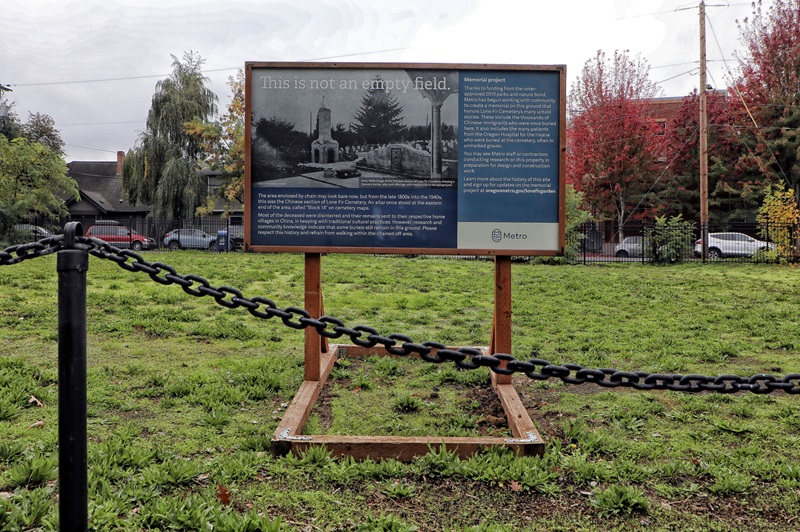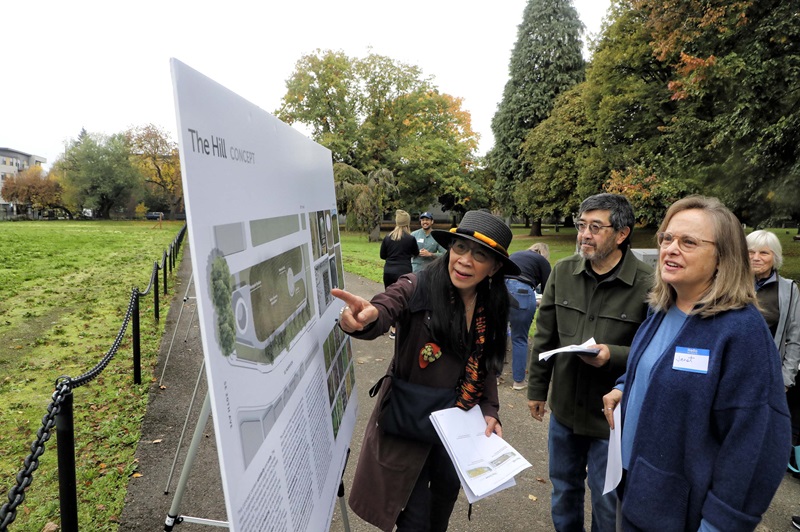Good morning! It’s Tuesday, December 26. We hope you had a Merry Christmas and wish you a Happy New Year.
Welcome to Katchup Briefing, the Korea Daily’s weekly English newsletter, where I’ll keep you informed with the latest news updates and perspectives from the Korean-American community. If you want to explore more articles and columns from previous weeks, please visit koreadailyus.com.

My notebook brims with stories of Asian immigrants marginalized in Portland, Oregon. The dead don’t speak, but their tombstones do, serving as condensed traces of life.
In a neglected corner of Portland’s Lone Fir Cemetery lies Block 14, a section notably devoid of tombstones. This area witnessed the almost complete erasure of early Chinese immigrants’ history. From 1867 to 1927, it was the final resting place for 2,892 individuals of Chinese descent.
My recent coverage detailed the Chinese community’s resistance to government plans to develop Block 14 into a condominium complex. Their struggle transcends mere immigrant issues.
Perched on the edge of Lone Fir Cemetery, Block 14 symbolizes the marginalization of these immigrants, shunned even in death.
In 2004, Multnomah County announced a plan to demolish the Morrison Building, constructed on Block 14, and sell the land for a condominium complex, posing an irrevocable threat to the sealed history of Block 14.
The attempted removal of Block 14 and mainstream society’s perception of Asian immigrants buried there highlight the broader narrative of Asian marginalization in American history.
The Chinese community, fearing the permanent loss of their ancestors’ immigration history, strongly opposed this plan.
The Chinese community’s response to this marginalization was robust. More damaging than discrimination is the erasure of their history.
Their fierce preservation efforts for Block 14 underscore a desperate need to maintain their immigrant history and identity. This is more than a battle for land; it’s a fight for their story, their legacy.
Recognizing its historical value, Multnomah County transferred Block 14 to Metro in 2007, reintegrating its entombed stories back into the narrative of Lone Fir Cemetery.
The challenge then shifted to recovering and preserving Block 14 as a historical landmark. In 2011, the Chinese community established the Lone Fir Cemetery Foundation to maintain the site and integrate its story with the cemetery’s broader history.
Their dedication aimed to ensure visitors to Lone Fir Cemetery engage with the project to create a memorial garden at Block 14.

Chinese immigrants first arrived in Oregon in 1851, contributing significantly to the state’s development through labor-intensive tasks. Without them, Oregon’s landscape would be vastly different.
Today, Portland’s Chinese population is primarily fourth- and fifth-generation, many having lost their native language. Yet, the battle for Block 14 mirrors their determination not only to retain their language but also their identity and history.
Portland’s Chinatown is now a mere shadow of its vibrant past. Faded Chinese signs are solemn reminders of a once-thriving community.
This narrative serves as a cautionary tale for the Korean-American community. Already, we see similar patterns: successive generations losing their native language and the evolving concept of “Koreatown” losing its traditional meaning.
As we mark 120 years of Korean immigration in America, we must ponder: Are we committed to preserving our history? Remarkably, the Korean-American community lacks a single museum dedicated to our history. Leaders of the Korean-American community should feel shameful for not being able to build a museum for Korean-American history.
We need to thoroughly document and celebrate the contributions of Korean immigrants to American history. It is crucial to systematically organize, preserve, and publicize these stories.
Today’s experiences are tomorrow’s history. Without a strong sense of our past, our stories risk being forgotten, much like Block 14.
Even for those who don’t speak Korean and are immersed in American culture, losing our history is not an option. Block 14’s story underscores the importance of preserving our legacy.
To truly integrate into America, we must voice our history. Recognizing the role of Korean immigrants in shaping American history is essential, transcending mere symbols of protest against hate crimes.
The defense of Block 14 by Portland’s Chinese community was not just about land; it was a stand for their immigrant story, a fight for their place in history.
By Yeol Jang [jang.yeol@koreadaily.com]




